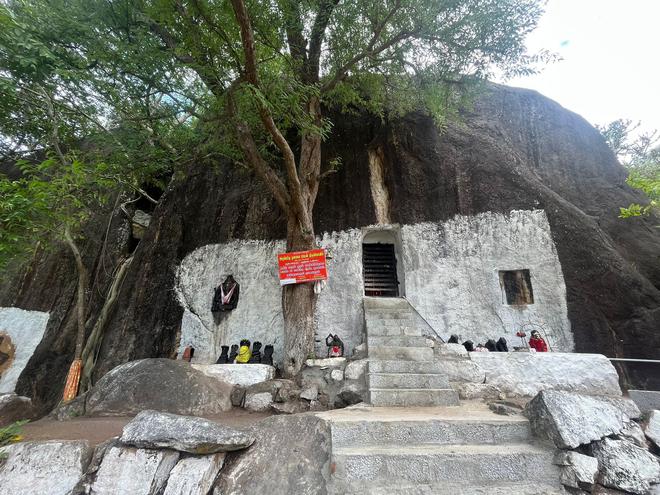The proposal of the Tamil Nadu government to declare an early Pandya period rock-cut temple in Kurathiarai in Kanniyakumari district as a protected monument has shed some light on its history. While the locals continue worship the deity as Avvayar Amman, the poet of the Sangam age, Kavimani Desikavinayagam Pillai, who was also an epigraphist, had written that it was the image of the Lord Vishnu, carved out of the rock.
In his article published in Kerala Society Papers, Kavimani in 1928-29 writes that, “two brass breast caps and a few other female ornaments found adorning the image at the time of my visit clearly show that it has undergone a complete metamorphosis at the hands of its pious worshippers in recent times.”

Anyone who visits the rock-cut temple could see the image of the four-handed Vishnu with conch and Sudarsana Chakra. Finance Minister Thangam Thennarasu, who is also in charge of archaeology, announced that the temple in Kurathiarai would be one among the 10 early Pandya period temples that would be declared as protected monuments.
“More than a century ago, the locals would have changed the gender of the deity and converted the image of Vishnu as Avvayar Amman. This should not be confused with another temple for Avvaiyar Amman in Thazhakudi in the district,” said folklorist A.K. Perumal, who has published the works of Kavimani’s articles.
The small rock-cut temple measures 5 feet in length and about 4 feet in width. “The chamber houses an image cut in high relief on the rock itself. This appears to be, limb for limb, an exact replica of the granite statue of Vishnu standing on a compound in Kuravanthattuvilai near Kurathiarai,” Kavimani writes.
Mr. Perumal, citing inscriptions, said the rock-cut temple was referred to as Kundra Pallai and the name of the deity was Kolaperumal. “The inscriptions could belong either to the 9th century or 10th century. It talks about donation of gold made by Sathan Siravanan,” he said,
S. Anantha Subramanian, a local history buff, said the Vishnu statue found outside the rock-cut temple in Kuravanthattuvilai had been appropriated by the locals who had installed it in a Sudalaimadan temple, a deity of graveyard.







